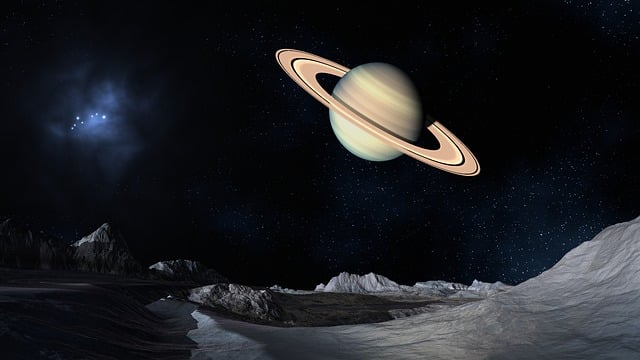
Pre-reading questions:
- Are you familiar with the planet Saturn?
- Can you imagine Saturn without its rings?
Vocabulary:
- mostly /MOHST-lee/
- appear /uh-PEER/
- dust /duhst/
- possibility /pos-uh-BIL-i-tee/
- universe /YOO-nuh-vurs/
[ADVERB] – mainly
The weather in this region is mostly sunny throughout the year, making it a popular tourist destination.
[verb] – to start to be seen or to be present
The sun began to set, and the stars started to appear in the darkening sky.
[noun] – dry dirt in the form of powder that covers surfaces inside a building, or very small dry pieces of soil, sand, or other substances
The old house was filled with cobwebs and layers of dust, untouched for years.
[noun] – a chance that something may happen or be true
With hard work and determination, there is a possibility of achieving your goals.
[noun] – everything that exists, especially all physical matter, including all the stars, planets, galaxies, etc. in space
The universe is vast and filled with countless stars, galaxies, and planets.
Article reading:
This discovery raises the possibility that the rings around other ice and gas bodies in our solar system, like Uranus and Neptune, may have once been larger and more vibrant. Understanding the formation and fate of Saturn’s rings could provide insights into the search for the building blocks of life in the universe.
True or False:
- Saturn’s icy rings are relatively young, possibly just a few hundred million years old.
- The rings are composed mostly of dust.
- The rings appear dusty, indicating that they have been around for a very long time.
- The rings are losing mass rapidly due to meteoroid impacts.
- The rings may have originated from the gravitational instability that destroyed some of Saturn’s icy moons.
Fill in the blanks:
| mostly | appear | dust | possibility | universe |
- The park is _______________ empty during the weekdays but gets crowded on weekends.
- I need to clean the shelves because they’re covered in _______________.
- Despite the challenges, there is always a _______________ of success if we work hard and stay positive.
- Scientists continue to explore the vast mysteries of the _______________ in search of answers about its origin and composition.
- The magician made a rabbit _______________ out of thin air during the magic show.